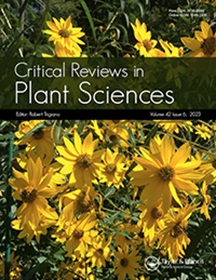Back to the Future: Re-Engineering the Evolutionarily Lost Arbuscular Mycorrhiza Host Trait to Improve Climate Resilience for Agriculture
IF 4.9
2区 生物学
Q1 PLANT SCIENCES
引用次数: 0
Abstract
The coming century in agriculture will be marked by increasing exposure of crops to abiotic stress and disease due to climate change. The plant traits with the strongest potential to mitigate these stresses are complex, and are increasingly recognized to involve interaction with the microbiome. Through symbiosis with soil fungi, plants form arbuscular mycorrhizae (AM) that can alleviate nutrient, water, and temperature stress, and can confer pathogen resistance and increased yield. The portfolio of advantages offered by AM overlaps with the benefits of agriculturally useful plant traits that have been the subject of decades of intensive biotechnological efforts, such as C4 photosynthesis and rhizobial nitrogen fixation. In this article we illustrate the prospective benefits of genetic engineering to produce AM in nonmycorrhizal plants and modify AM in already-mycorrhizal crops. We highlight recent advances which have clarified the key genetic and metabolic components of AM symbiosis, and show that many of these components are involved in other plant biological processes and have already been subject to extensive genetic engineering in nonsymbiotic contexts. We provide a theoretical research roadmap to accomplish engineering of AM into the nonmycorrhizal model Arabidopsis including specific molecular genetic approaches. We conclude that AM is potentially more tractable than other complex plant traits, and that a concerted research initiative for biotechnological manipulation of AM could fill unique needs for agricultural resilience. Finally, we note that engineering of AM provides a potential back door into manipulation of other essential plant traits, including carbon storage, and beneficial microbiome assembly.回到未来:重新设计进化上消失的丛枝菌根寄主性状以提高农业的气候适应能力
下一个世纪的农业将以农作物日益暴露于气候变化造成的非生物胁迫和疾病为特征。缓解这些胁迫的最强潜力的植物性状是复杂的,并且越来越多地认识到涉及与微生物组的相互作用。通过与土壤真菌的共生,植物形成丛枝菌根(AM),可以缓解养分、水分和温度胁迫,并能赋予病原体抗性和提高产量。AM提供的优势组合与农业上有用的植物性状重叠,这些性状一直是数十年密集生物技术努力的主题,如C4光合作用和根瘤菌固氮。在本文中,我们阐述了在非菌根植物中生产AM和在已经菌根作物中修饰AM的基因工程的潜在效益。我们强调了最近的进展,这些进展已经阐明了AM共生的关键遗传和代谢成分,并表明许多这些成分参与了其他植物生物过程,并且已经在非共生环境中进行了广泛的基因工程。我们提供了一个理论研究路线图,以完成AM工程到非菌根模型拟南芥,包括具体的分子遗传方法。我们得出的结论是,AM可能比其他复杂的植物性状更容易处理,并且对AM的生物技术操纵的协同研究倡议可以满足农业弹性的独特需求。最后,我们注意到增材制造工程为操纵其他重要植物性状提供了潜在的后门,包括碳储存和有益微生物组组装。
本文章由计算机程序翻译,如有差异,请以英文原文为准。
求助全文
约1分钟内获得全文
求助全文
来源期刊
CiteScore
12.90
自引率
1.40%
发文量
15
审稿时长
>12 weeks
期刊介绍:
Critical Reviews in Plant Sciences focuses on presenting in-depth and up-to-date reviews of timely and/or cutting-edge subjects in the broad discipline of plant science, ranging from molecular biology/biochemistry through the areas of cell biology, plant pathology and physiology, genetics, classical botany, and ecology, to practical agricultural applications. Articles in the journal provide an up-to-date literature base for researchers and students, pointing the way towards future research needs. The journal is also a significant source of credible, objective information to aid decision makers at all levels.

 求助内容:
求助内容: 应助结果提醒方式:
应助结果提醒方式:


